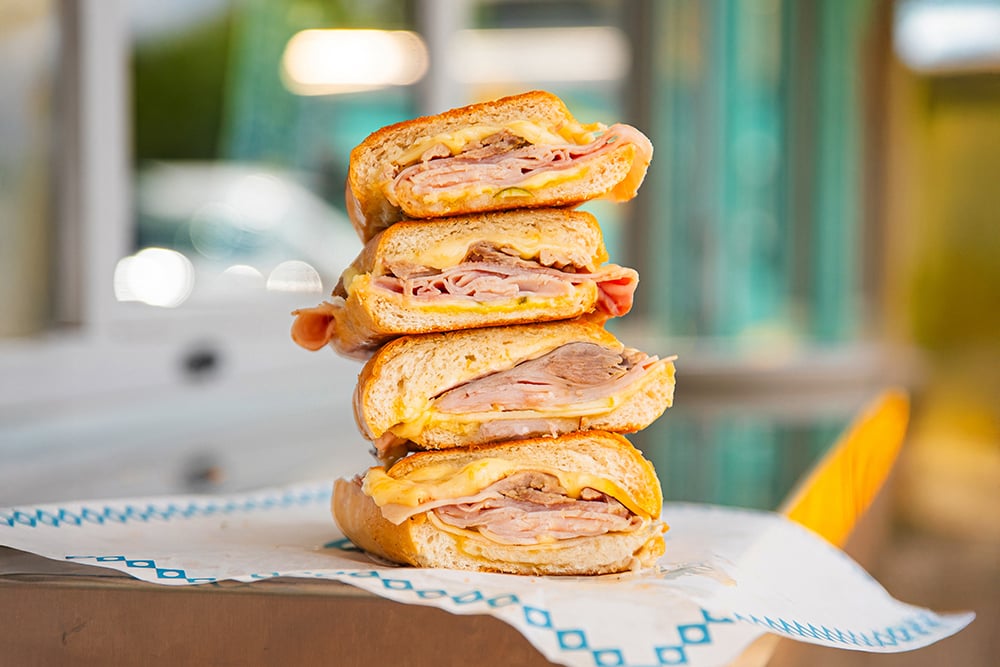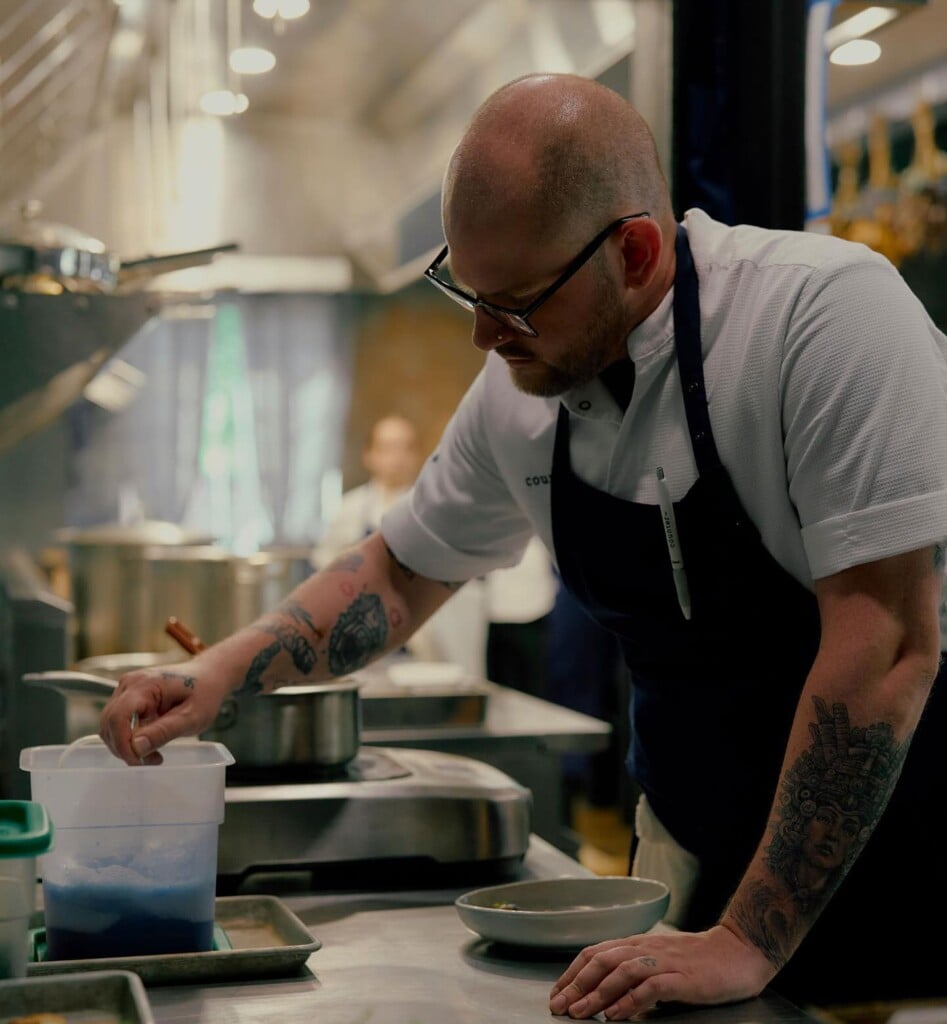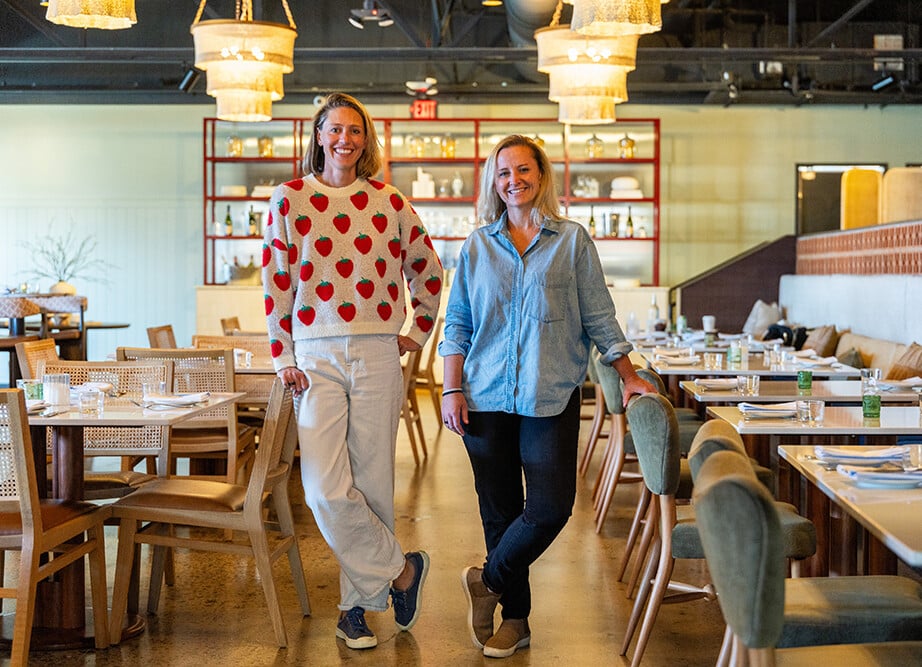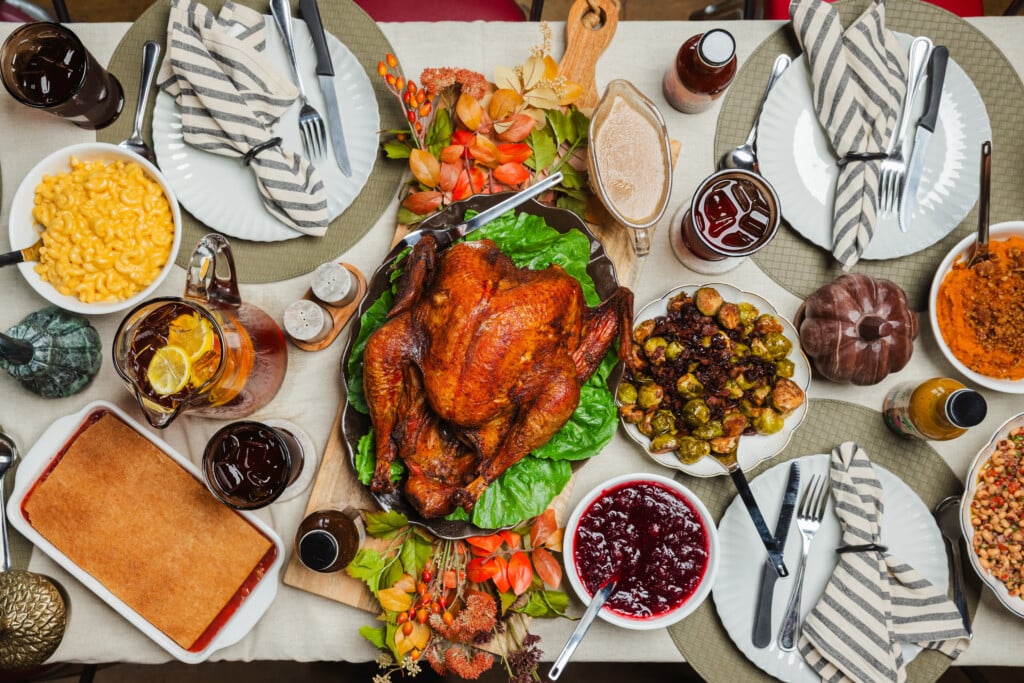Calle Sol’s Battle For The Perfect Cuban Sandwich
Why do they make two versions of the same sandwich? And which 'wich do customers prefer?

Behold the Cuban sandwich: layers of ham, roast pork, Swiss cheese, pickles, and mustard tucked inside pan Cubano (Cuban bread) and pressed on a grill to melt the cheese and lightly toast the bread. It’s a handheld masterpiece. So why would Calle Sol, the Latin café and cevicheria with two Charlotte locations, serve two versions?
As with so many culinary traditions, the answer lies mainly in regional variation—and some controversy over the sandwich’s origins. Both Miami and Tampa claim it, and each city serves its own version. It’s a friendlier debate than, say, ours over barbecue. But each city believes theirs is superior.
FS Food Group founder Frank Scibelli discovered the Cubano when he lived in Tampa in the late 1980s. “They use simple mustard, not dijon that overpowers the sandwich, and the places I used to go in Tampa added salami. Tampa has more Italian influence,” he says. “It’s really simple; they don’t overdo it.” In Miami, they use lighter, airer Cuban bread and skip the salami.
When Scibelli was doing research and development for Calle Sol, he brought Shai Fargian, FS Food Group’s corporate executive chef, to Ybor City, Tampa’s historic district. “We ate in 13 restaurants in 24 hours,” Fargian says. “Our first stop was at La Segunda. We wanted the best bread we could get.”
La Segunda is a 110-year-old bakery famous for its authentic Cuban bread. “They’re still doing stuff by hand,” Scibelli says. “It’s really inefficient, but it’s how they’ve been doing it forever.” Like New York City bagels, it’s nearly impossible to replicate, so they decided to have La Segunda’s loaves shipped to Charlotte.
Fargian says it took a few weeks to get their recipes just right. “We roast our pork overnight for 12 hours, but we adjusted it slightly when we came back from Tampa,” he says. “I’d look at how the slicer was set. It throws the balance off if you cut it too thick.” He also experimented with a few varieties of Swiss cheese until he found one that melted best and tried 20 different hams before he landed on Boar’s Head. “The salami isn’t a strong salami that overpowers the sandwich,” he says.
The two versions of Calle Sol’s Cubanos look almost identical when plated side by side, but they have distinct differences. The Tampa version has Genoa salami and mayo, while the Miami one does not. It’s a classic Charlotte move to offer both versions to satisfy the city’s range of tastes, but Scibelli says that’s not why they do it. “It’s about authenticity, and the details matter,” he says.
“We’re trying to recreate a memory,” Fargian adds. “People want it how their family made it.”
They’ve found that customers prefer the Miami version. At Calle Sol’s Plaza Midwood location, Scibelli says they sell three Miami Cubanos for every two Tampa Cubanos. In SouthPark, it’s about two to one. They order three to four cases of La Segunda’s bread three days a week and get customers from both Tampa and Miami who want a taste of home. But the Cubanos will always be universally loved menu items.
“Think about what our brain and body like,” Fargian says. He points to sour cream-and-onion potato chips as a prime example of food that’s salty, fatty, crunchy, and sweet. It’s the same with the Cubano. “Mustard is something a lot of people miss—we use it for acidity, not heat,” he says. “Our pickles give it sweet, acidic notes, and the roast pork gets savory. Cheese adds sharpness, and you get the crunchy from the bread. It’s really simple. You don’t have to over-chef it.”





